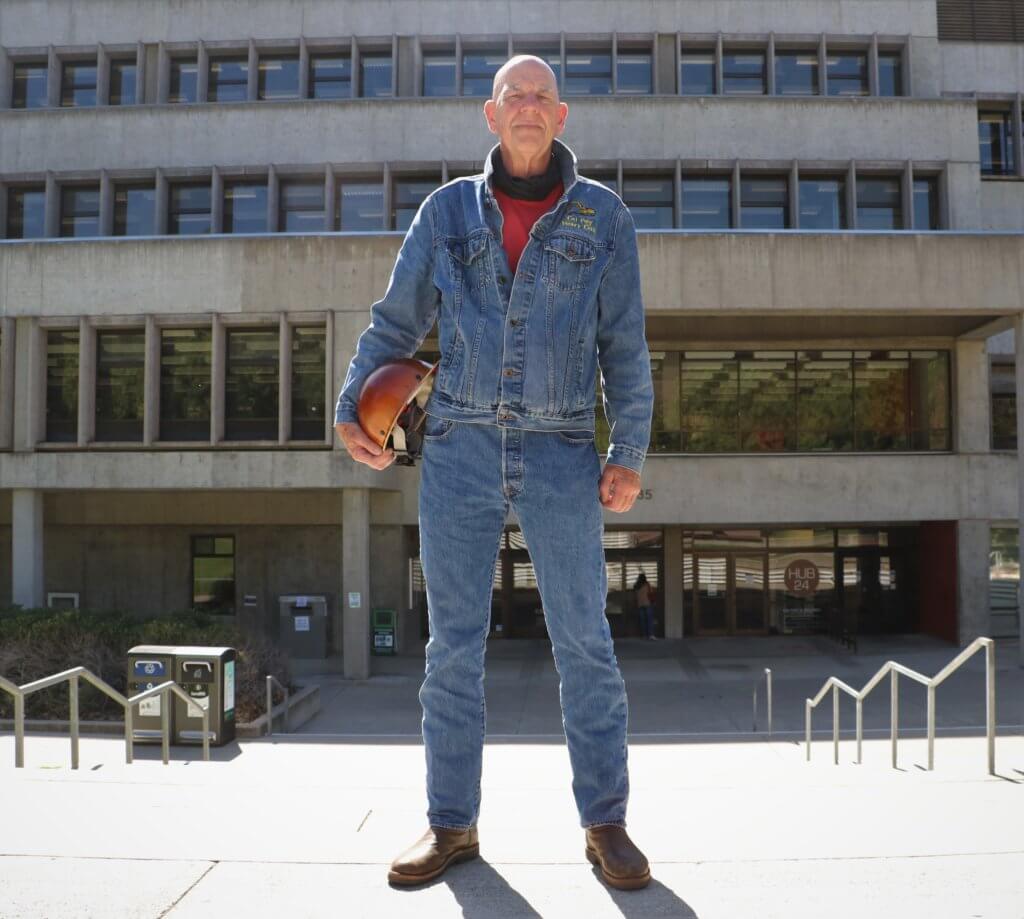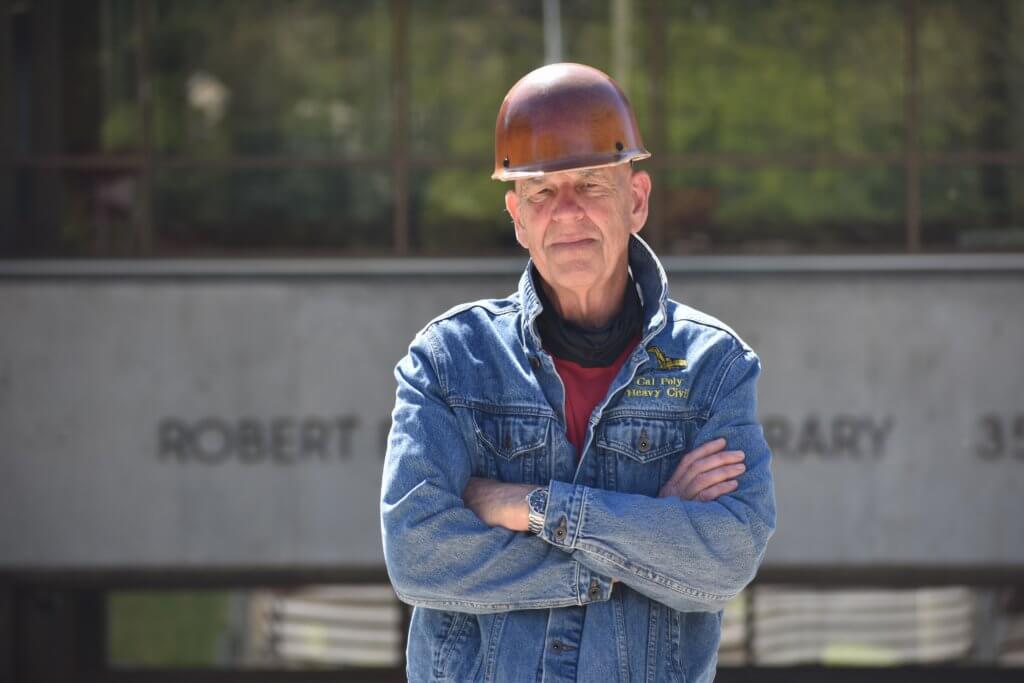Ed Boucher, the new director of the Granite Heavy Civil Minor, discusses his career and the industry

In a story he often repeats, Ed Boucher recalls someone asking him to define what heavy civil construction is.
“I said I’ll do it in six words,” Boucher recalled. “’Big jobs. Big toys. Big money.’”
After more than 40 years working those big jobs, Boucher retired from the industry to focus on teaching, a significant career shift that began in 2018. Now, as the new director of the Granite Heavy Civil Minor (GHCM) Boucher will have to both teach and sell the industry to prospective students.
“Heavy civil is not a career for everybody,” he acknowledges. “What I tell people is if you’re looking for a 40-hour-a-week job, you might want to rethink this.”
Yet, he added, the career is a “blast,” packed with action and – as he says – big projects.
“Who builds space launch platforms? Heavy civil. Who transports million-pound loads across the country? Heavy civil. Who developed the demolition cleanup plan for the World Trade Center?” he said.
The GHCM, in its second year, is an interdisciplinary minor developed both by the Civil and Environmental Engineering and Construction Management departments. A shared initiative from the College of Engineering and College of Architecture and Environmental Design, the program prepares students for careers that involve large-scale projects, such as highways, bridges, dams, power plants, subways and more.
Boucher, who grew up near Chicago, has roots in the construction industry.
“My grandfather was a charter member of the electrical workers union,” he said. “My father was a high-voltage cable slicer.”

After a brief stint in college, Boucher quit to work in construction, building large industrial complexes, including several in the nuclear industry. In 1983 he worked at Diablo Nuclear Power Plant in Avila Beach – a massive project that had to consider both energy efficiency and safety from natural disasters and terrorist threats.
“The containment dome is designed to withstand the direct impact of two, full-throttle 747’s at the same place at the same time,” he said.
In his first 20 years in the career, Boucher traveled the country, working on several nuclear plants, with temporary stays in Pennsylvania, Massachusetts, Arizona, Ohio, Florida and more.
“Every place becomes home after a while,” he said.
In 1987, he returned to San Luis Obispo County to take classes at Cal Poly. And soon after earning his bachelor’s degree in 1992, he was back at Diablo, helping to shore up the reactors.
“I got a call to come back to Diablo because they found a new seismic fault, and they were going to do additional upgrades,” said Boucher, who would earn master’s degrees in engineering management and business administration while working at PG&E.
While Diablo became one of the most secure plants ever built, now PG&E has plans to shudder the plant by 2025.
“The next step is one of the biggest construction undertakings in the state of California has ever seen,” Boucher said. “Taking it apart.”
The minor he leads is particularly notable for teaching students about both design and construction – two elements that were historically separate phases of major projects.
“To be good at construction – this is what I tell students – you’ve got to have a working knowledge of design,” Boucher said. “Because part of the job is constructability.”

The heavy civil market is strong, he said, and that’s likely to continue since the country’s bridges and roads need upgrades. But, to get students interested, Boucher knows he has to dispel stereotypes, including the image of men wearing hard hats near bridges.
“That’s a misconception about heavy civil,” he said. “People think it’s the same thing day after day, and it’s not.”
He once asked a crane operator what his strangest task was.
“Without hesitation, he said, ‘Michael Jackson’s elephant,’” Boucher recalled. “He talked about the logistics of going down to Santa Barbara and having to cut holes in the barn roof, using jackhammers, trying to figure out the elephant’s center of gravity and trying to rig it up.”
Boucher himself worked on major buildings, excavations and road projects and helped develop a demolition plan and cleanup after the 1987 Whittier earthquake, the Oakland firestorm of 1991, and copper dam failures in Alaska.
But now his career is focused on teaching what he knows to others.
“I’ve built a lot of things in my life, but I really feel that this is without a doubt one of the most important things I’ve done,” he said.


